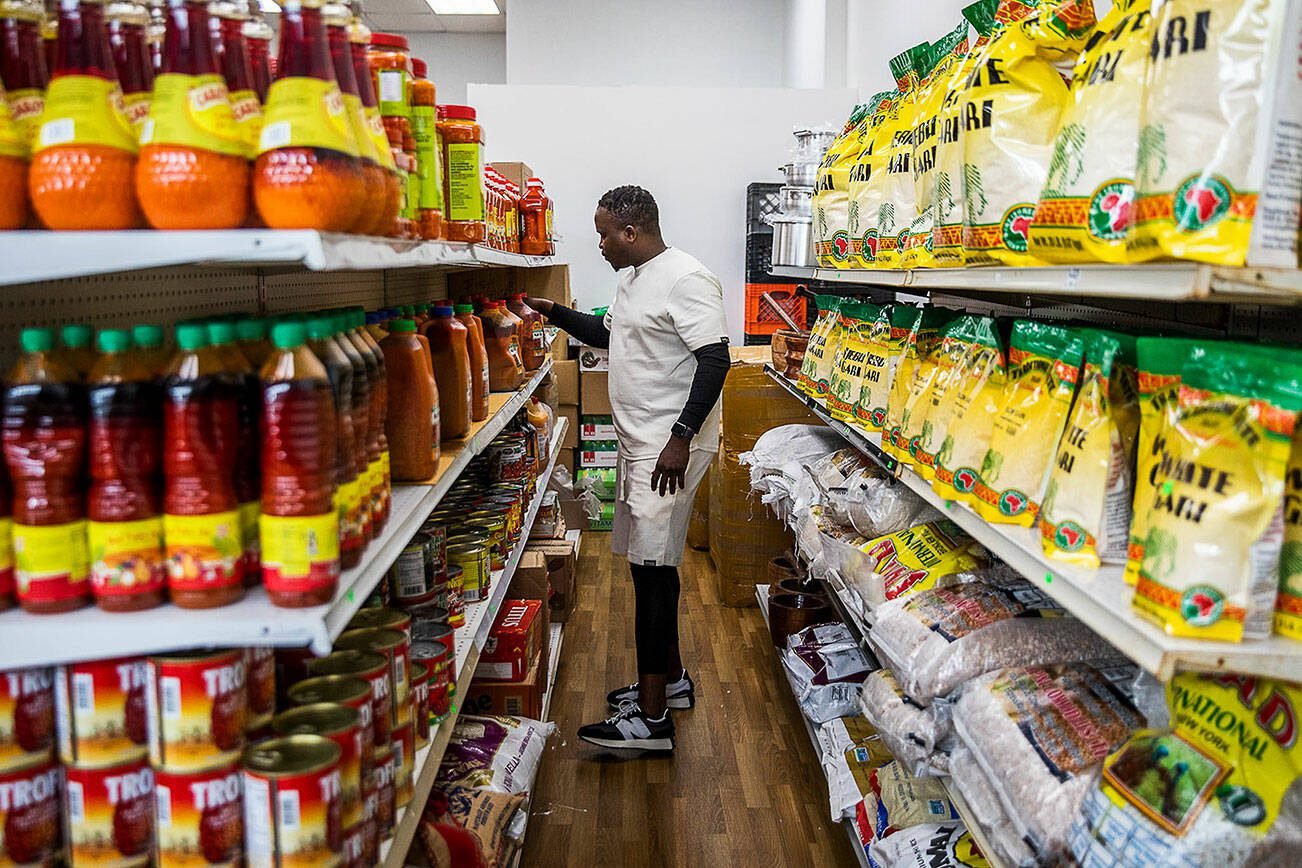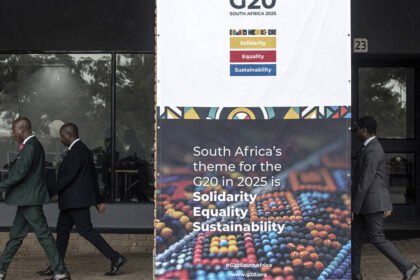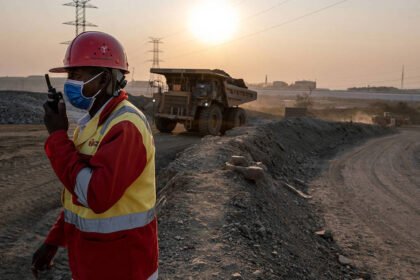The concept of a growing middle class especially in Africa has become fashionable in recent years. After all, a strong middle class is a good indicator of a stable society. They drive consumerism, promote economic growth and prosperity, while encouraging investment and entrepreneurship. As a collective they can bring about better governance, higher education expectations and where possible political stability. In Africa, South Africa has stood as a strong example of democracy and stability and a cursory examination of the country seems to confirm this construct, yet a deeper look shows that this is more of a Western ideal than reality on the ground.
Global economies are facing a situation where in the West, there is a decrease in those falling into the middle class, yet the South and Africa are booming with an explosion of those falling into this class. In Africa especially, this seems to suggest that a narrative of development and opportunity in the continent has been spun, convincing many that they are middle class and better off than what they actually are.
A pertinent issue becomes that of defining the middle class. Does it actually exist in Africa? If it does in what form? Can its construct truly be compared to that of the Western world? In 2012, the African Development Bank (ADB) put the number of people in the middle class at about 300 to 500 million people, approximately a third of the continent’s population. How is such a number derived, what criteria enter individuals into the middle class? In South Africa the numbers of the middle class have at times even been touted as above 50% of the population yet the extent of poverty and the country’s fall in Gini coefficient seem to belie this supposed fact.
Most definitions of the middle class are built from Marxist or Weberian theory. The former classifies according to those to work for themselves and are owners or propertied, while the other looks at characteristics such as education and income. Both these theories though fail to properly accommodate the exact context in which Africa finds itself. In truth, no specific theory has been able to properly classify the middle class in Africa as it is still a developing concept.
AfDB defines economic categories as shown below while various authors define the middle class as hypothetical or even mythical. Defining the middle class as starting from those with a daily expenditure of $2 (this is at 2005 PPP[ PPP – Purchasing Power Parity] US dollars, could be estimated at $2.94 today) requires quite a stretch of the imagination in South Africa. Many in the floating category defined as emerging middle class are simply at not starving status and easily fall back into the poor category. With rising inflation and a declining economy, the lower middle class finds itself at risk each day, barely surviving. The upper middle class by this categorisation are a part of the population that are currently finding themselves over indebted, unable to save and likely just about making ends meet.
A more realistic economic definition of the middle class keeping the Western context in mind could be that found in Credit Suisse’s Global Wealth report that considers middle class as individual wealth between US$50,000 and US$500,000. This categorisation drastically reduces the continent’s middle class to about only 18.8 million people. While this would be a third of South Africa’s population, SA makes up only 5% of the continent’s population.
From the schools of thought below, the more accurate middle-class definition would be that using median income. In South Africa for example, the median income is just under R30,000, at almost $2,000. They can truly be counted as consumers and driving entrepreneurship. They are typically educated, have a car, own property and for many, work in the public sector. The development of this class has been well noted especially in racial terms with the majority of this class shifting to black as opposed to white. As of 2012, using these criteria, of the 8,3 million people making up the middle class 4,2 million were black. This the group which will be referred to as the middle class moving forward as they more closely meet the original Western construct of the middle class.
In recent years, various studies have shown the shrinking of the middle class and with it an accompanying downturn of South Africa’s fortunes. The question is, is there a causal relationship or it is more of correlation? In South Africa, does the middle class actually play the role its purported to or there are other factors at play? Are there similar patterns in other strong economies on the continent to make this more of an African trend than an isolated occurrence?
Over the last 2 years, stability has become a concept that many more are grappling with regardless of their income status. Besides simple bread and butter issues, more are reconsidering their thoughts on the economic and political future of South Africa. With incomes reduced, livelihoods lost, for many it feels like the struggle has just begun. Where before there was hope, it looks as though reduced circumstances are here to stay and things will not be better for a while if ever at all.
While it is always expected that the poor are especially vulnerable to shocks, the pandemic has shown that things are not so clear cut. The middle class, the one class expected to be able to weather shocks, to have savings, generally live an easier life has suffered unexpected setbacks from prior to covid. Some who were living relatively comfortable lives before found themselves with their income completely gone or drastically reduced. This is a trend that goes beyond the private sector as government has also found itself in dire straits in its various parastatals.
Statistics show worry over this class was becoming a focal point from as early as 2018. While studies may differ slightly concerning the actual size of the middle class, in 2019 a SALDRU study found that only 20% of South Africans belonged to the “stable” middle class. The implication is that it can be a transient class, something especially Covid has proven true.
Old Mutual rightly states that instead of focusing on the size of the middle class, focus should be on their state. South Africa’s economic sustainability is at risk with a relatively limited middle class facing high levels of indebtedness and a heavy tax burden. A model developed by Eunomix Business & Economics Ltd. Shows South moving from upper middle income to lower middle-income status. This is understandable considering that due to lockdown restriction at least 200,000 middle class jobs were lost in what has been termed “class suicide”. These numbers may seem relatively modest until one considers that South Africa is a working-class society consisting of a small middle class. Shedding this many jobs and reduced income in some cases have severely affected the standing of the middle class with debt income ratios for some sitting as high as 152%.
Unfortunately for South Africa, its middle class is not sitting back and patiently waiting for things to improve. With only about 30% of the middle-class believing things will improve, about 27% are looking to emigrate within the next 5 years. Basically, professionals are seeking greener pastures elsewhere. Where before it was the white minority that was looking at emigration, the black majority are increasingly looking to leave the country too. The wealthier, upper middle class have also been identified as those jumping ship as they seek more stable economies elsewhere. The SARS commissioner has even flagged the fact that money and skills are leaving the country at unprecedented levels which will result in long term brain drain and tax base erosion issues.
The major question becomes how South Africa has come to be in a position where in recent years its middle class has shrunk by over 50% and is moving to lower income status. In addressing this issue, the Eunomix model points at political and economic decline. The country is headed towards failed state status because of its reduced tax base, policies that are not growing the economy, violence and rising discontent among the citizens. The stability fostered by a thriving and stable middle class is slowly being eroded.
One study focused on what keeps South Africans up at night zeroed in on these top three factors in order, crime, corruption, covid. A significant number of participants indicated intentions to leave as there was more focus needed on safety, governance and prosperity and it seems as though there is no will from government to improve the situation. The country has been so focused on commissions and reports, yet no practical or tangible action seems to be taken against offenders. Corruption has become a byword, something expected in all facets of society that it seems an insurmountable obstacle to progress. A quick glance of headlines shows the levels of violence experienced in this country, the crimes that are a daily occurrence, this sense of life being worth very little in this country. It is no wonder that those with the means are more than willing to look for better prospects.
Where before South Africa sat as the bastion of democracy and opportunity in Africa, attracting foreign talent from all over the continent and the world, today it is struggling to pull itself out of the doldrums of inefficiency, monetary wastages, a corrupt political base, policies that have benefited the few at the expense of the many and xenophobia against their black foreign counterparts. Skills that would have come to South Africa from within Africa are looking at Western shores an outcome likely to be lauded by those who do not understand the need for scarce skills and the shortcomings the country is facing with its labour force.
These problems revert one back to whether the middle class actually occupies the position it is said to or whether there is more to a country’s stability than their strong presence. The figure below shows what the middle class supposedly contributes and the current state of South Africa.
It is important to determine whether the state of the middle class is endemic to South Africa. On the continent, Kenya and Nigeria from East and West Africa respectively can be considered. Over the last two decades both countries have experienced growth in their middle class achieving middle class income country status.
From 2010, Kenya moved towards political stability with a new constitution that embraced a multi-party system. That stability has unfortunately not translated into greater security as its porous borders with Somalia, South Sudan and the Great Lakes Region leave it at risk from insurgents. Notwithstanding these challenges, the country has continued to develop.
Currently Kenya boasts the second largest economy in East Africa after Ethiopia. Agriculture has always strongly contributed to the GDP, but this has gradually decreased to just under 25%. Industry on the other hand has increased its contribution to about 21% and services are at about 50% of the GDP. Between 2014-2018, Kenya’s GDP went up 5,7% driven by the service sector in terms of real estate, finance and insurance, wholesale and insurance, education, transport and storage.
While Kenya has a vibrant private sector, it has a dichotomous structure. The formal business sector is strong but concentrated in few firms while there is a massive, informal, low productivity small business sector. While it did lose its gains in the Global Competitiveness Index, it still has viable business opportunities and attracts foreign direct investment for private sector investors. It has a variety of international organisations such as the United Nations, Coca Cola, General Electric, IBM and the World Bank regionally headquartered in Nairobi and recently Google announced it was setting up its first Africa product development centre there. The presence of such firms has helped foster the middle class which stands at 24% of the population according to the Kenya National Bureau of Statistics.
While the middle class have been improving in numbers, socially there are still high levels of poverty, limited access to basic services, inequality and unemployment. Kenya’s Gini index though fares better than that of South Africa at about 41%.
The role of the middle class in Kenya has also been exaggerated by onlookers and failed to meet expectation. The class has proved rather fluid, based largely on economic parameters, and still bound by the cords of ethnicity and status quo especially in political matters. The growth of the middle class has been reflected in the economic growth of the country, with increases especially in consumerism. With economic success in hand, most tend to be wary of any change that could possibly reverse their fortunes which makes the middle class more accepting of the status quo to ensure their survival.
Nigeria on the other hand is a new middle-income country with an impressive GDP. As in Kenya, the services sector is the largest contributor to the GDP at 46% through financial and business services and real estate; creative arts and entertainment and information, communication and technology (ICT). Agriculture’s contribution is also decreasing and a decrease in tourism has also been noted. Nigeria is unique in that its budding entertainment industry actually contributes up to 2,3% of its GDP making it one of the largest employers in the country after agriculture. Final household consumption makes up about 80% of the country’s nominal GDP with this increase reflecting a growing middle class that makes up 23% of the population.
Unfortunately, the country still faces myriad challenges in security, fragility, slow growth, infrastructure deficit, low level human capital development, poverty, high inequality and rising youth employment. It is currently facing an economic recession due to volatile crude oil prices from pandemic. Its greatest challenge is diversifying from economy dependence on oil revenues.
As with Kenya, the private sector is dichotomous with large enterprises and a massive number of mostly informal Micro, Small and Medium Enterprises (MSMEs). Of the 41.5 million MSMEs, only 0,25 of these are Small and Medium Enterprises (SMEs). The micro enterprises make up 86,1% of the national workforce in the country. Even with such entrepreneurship the poverty numbers remain quite high with over 53% of the population surviving on less than $2 per day, and 92% on less than $6 a day.
Nigeria’s middle class has notably been indifferent to any forms of activism concerning the challenges in the country. The middle class has been missing from the political arena since return to democratic civilian rule in 1999 where they were expected to promote democracy and its ideals. They have failed to act in the face of programs and policies that have proved detrimental to the class and its growth. Some feel the middle class has even worked against possible gains by siding with government in its failures, propping them up in spite of overwhelming evidence of incompetence in terms of health systems, security, education and corruption. Instead of holding government to account, they tout its failures as opportunities for foreign investment. The middle class is accused of ensuring the subjugation of the working class and ensuring the system works for a few at the expense of many. It is only in recent time they have been showing signs of trying to shake up with status quo especially with recent elections and the #EndSARS movement. As with South Africa though, the middle class is steadily emigrating as they look abroad for greener pastures.
An overview of Kenya and Nigeria is summarised as follows:
In all of three countries, it is clear how the middle class has tied its success to that of the ruling elite. Former ANC Secretary General, Gwede Mantashe famously said the black middle class must remember they were beneficiaries of the progressive policies of the ANC and while not indebted, they must vote consciously. He in essence voiced what most of the middle class acknowledge and live by. Where the middle class is supposed to ensure proper governance and keep government in check, they tend to be kept in check by the elite they uphold. Efforts to break free of the stranglehold of government have yielded limited results as seen by the 2016 South African elections where the ANC lost major metros to the opposition but managed to regain some of them when coalitions fell apart, the last elections in Nigeria where quite a number of independent candidates ran for office but faced defeat and the elections in Kenya where the middle class voted by ethnicity lines.
With the dawn of democracy, activism has become more of a grassroots endeavour as the middle class shows apathy to the various challenges besieging their nations. All the ideals expected from their emancipation have failed to yield the expected results.
There is a need for the middle class to be independent of its governments. The fact that in Africa, the government is the largest employer and thus the foundation of the middle class means breaking free will be difficult for the middle class. Economies in the West are driven by massive employment in the private sector, and business prospects that are not dependent solely on government tenders.
The size of the middle class has been substantially reduced by the pandemic in sub Saharan Africa. This means more people have fallen into the poor income bracket. As long as accountability and activism are not a priority, the situation will continue to deteriorate. While not in the majority, the middle class holds the advantage of being the intellectual asset of the nation, they provide skills and knowledge that are critical for positive change. They need to find a way of leveraging their status, looking beyond the comfort of self and focusing on improving the standing of the working class. The middle class needs to come together as one cohesive unit for change to be realised otherwise they remain a myth creating mythical utopias while the reality is more dystopian.



